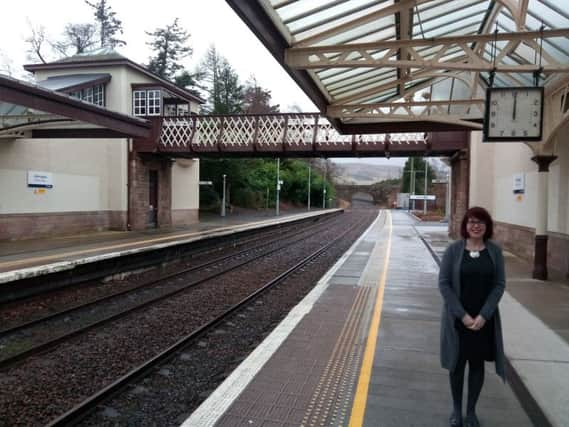Alastair Dalton: All change for the better at Scotland's most historic stations


But latterly, despite being served by more trains than ever before, many of Scotland’s railway stations have had as desolate an air as shut-up seafront buildings out of season.
Now, their fortunes are changing once again, thanks to an inspired programme by successive operators of the ScotRail franchise and the Railway Heritage Trust.
Advertisement
Hide AdAdvertisement
Hide AdThe dedicated small team involved is nearing the remarkable milestone of finding a new use for buildings at all of the dozens of listed stations across the country.
Among the first was a laundry business, The Ironing Station, which has been at Dunblane Station for 11 years.
Since then platform buildings have re-opened their doors in a wide variety of new guises, such as cafes, bookshops and cycle hire points.
In Fife, a string of artists’ studios have taken over stations, with a pottery the next planned addition at Aberdour.
Craft workers in Broughty Ferry want to do the same at their still-empty station, with an eye to the potential from visitors staying locally when they start flocking to the forthcoming V&A Museum of Design in Dundee.
Elsewhere, several stations on the tourist-draw West Highland line to Fort William and Mallaig have become bunkhouses, including Corrour – of Trainspotting films fame – while you can also stay in the former signal box at Kyle of Lochalsh.
A restaurant has opened at Tain, a karate gym is planned for Helensburgh Central, and a building firm has taken up occupancy at nearby Kilpatrick.
Plant and flower displays have also bloomed again, evoking the heyday of stationmasters’ floral pride.
Advertisement
Hide AdAdvertisement
Hide AdAll that activity has led to more than 250 of Scotland’s 350 stations having rejuvenated buildings or gardens.
This week, prospective tenants were shown round Gleneagles Station, which until recently had been empty for 30 years after becoming unstaffed, despite being extensively refurbished for the Ryder Cup golf tournament in 2014.
One of the grand rooms, resplendent in the former Caledonian Railway’s brown and cream colours, is now occupied by event management firm Brightstar Scotland.
More enterprises are expected to follow, with a further boost likely next year when even more trains stop at the station – a dividend of the impending introduction of ScotRail’s new fleets.
For Gleneagles, and the many other stations which will benefit from similar increases in services, this should come as a significant business opportunity.
It would also further increase the attractiveness of travelling by train if commuters have the opportunity of buying a latte or newspaper, browsing a bookshop, or buying some flowers, while waiting to depart.
The number of vehicles in the station’s car park has already increased from five to 50, and passenger numbers have increased by two thirds in five years to around 70,000 a year.
I’m told that there are just two remaining listed stations on the Scottish network still looking for a new life – Brora in the Highlands and Garelochhead on the west coast.
It can only be a matter of time until they, too, are back on track.